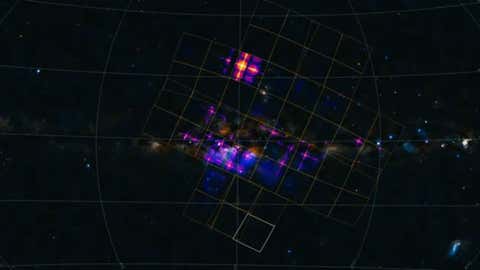
In the vast expanse of space, where mysteries abound and cosmic phenomena dance in the darkness, a new era of understanding the universe has begun with the launch of the Einstein Probe. This groundbreaking project, a collaboration between Chinese and European scientists, takes inspiration from the eyes of lobsters to revolutionize the way we observe the cosmos.
The Einstein Probe, launched on Jan. 9 aboard a Chinese Long March rocket and currently orbiting at an altitude of 600 kilometers, is not your typical telescope. It incorporates cutting-edge technology with a biological twist, aiming to explore the universe in a never-before-seen widescreen format. The telescope is currently in the testing and calibration phase, with its initial observations revealed at a symposium in Beijing.
X-rays, with their high energy, have long posed a challenge for scientists due to their inability to be easily captured by traditional lenses or mirrors. However, inspired by the unique visual system of lobsters, which relies on reflection rather than refraction to process light, scientists have adapted lobster-eye optics for use in space telescopes. This innovative approach provides panoramic vision and allows the Einstein Probe to survey the entire sky in X-rays.
While the concept of lobster-eye optics was introduced in the late 1970s, it has taken decades to realize its potential in space exploration. Previous missions like the Lobster Eye Imager for Astronomy (LEIA) paved the way, but the Einstein Probe is the first telescope to leverage lobster-eye optics for a comprehensive survey of the sky in X-rays.
Central to the Einstein Probe is its Wide-field X-ray Telescope (WXT), equipped with twelve modules housing hundreds of thousands of tiny tubes arranged in a grid pattern. This design enables the WXT to capture an expansive field of view, covering over 3,600 square degrees of the sky in a single shot. In just three orbits, the WXT can image the entire sky in X-rays, providing unparalleled insights into transient events and cosmic phenomena.
The primary goal of the Einstein Probe is to detect X-ray transients, which include stellar flares and collisions of neutron stars, among others. With its wide field of view, the WXT is set to revolutionize our comprehension of these transient phenomena, offering new perspectives on the dynamic processes that shape the universe.
As humanity embarks on this cosmic journey with the Einstein Probe, we are reminded of the limitless ingenuity inspired by nature’s wonders. By harnessing lobster vision principles, we have unlocked new frontiers in our ongoing quest to uncover the mysteries of the universe. In the eyes of lobsters, we find not just inspiration but a guiding light illuminating the path to discovery in the vast expanse of space.


